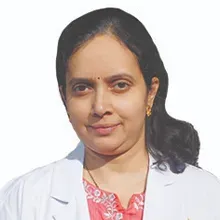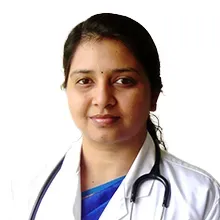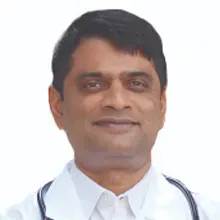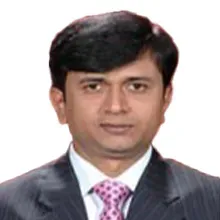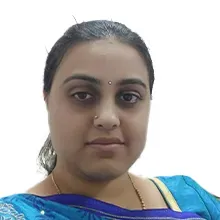Overview of Pediatric Dentistry Treatment India
Why is Paediatric Dentistry Important?
Dentistry for children serves the following benefits:
01. Introduction of oral hygiene to young children - Pedodontics helps children develop valuable habits right from their birth. They are taught the effective techniques of brushing, flossing and other oral hygiene methods which are followed by them in their adolescence and adulthood as well.
02. Addresses dental problems at an early stage - Dental problem, or any other problem for that matter, escalates if ignored. If your child visits the dentist and has an issue concerning oral health, it will be addressed rightfully and timely.
03. Building strong teeth and gums - Taking care of your teeth and oral health altogether would certainly help to strengthen teeth and gums and avoiding lifelong complications.
04. One dentist for all problems - There is nothing better than having a doctor for all your dental issues. A paediatric dentist is a person of specialized skills and expertise who knows well about the history and oral health conditions of the child already, he/she can be pinged whenever any dental problem or disease invokes.
What are the qualifications of a Paediatric Dentist?
It is mandatory for the paediatric dentist to have completed at least:
01. Four years of a degree at a dental school.
02. Two additional years of training in dentistry of infants, children, adolescents and children with special needs.
It is pertinent to remember that kids are not just small adults and therefore, require a person enriched with compassion, patience and kindness. also, they have several structural and functional difference which need to be taken care of.
Techniques adopted by paediatric dentists to manage child patients
There is no absolute uniformity in the approaches followed by pediatric dentists. However, certain methods are widely acceptable, if not by all. These methods are intended to calm down the anxiety of young children. It includes -
01. Desensitization - It is primarily used for people dealing with anxiety, especially children. It aims at exposing children to a series of experiences that would scale down the anxieties.
02. Tell-show-do - The objective of this technique is to make the child understand the procedure basically, if not technically. This also helps to cope with panic and anxiety. If the child understands the procedure, he/she will accept it readily.
03. Modelling - In this method, a person imitating the child, is seated. The dentist mocks up the needful on this person so that the child knows what is coming and gets prepared for it.
04. Reinforcement - It finds its basis in the fact that once a behavior is reinforced, it strengthens. It implies that, say when a child does something he is asked for and he gets rewarded (with a smile or a thank you) for the same, it is likely that his behavior will be reinforced whenever he will be asked to do something again. Technically, it is a behavior modification technique.
Besides this, some paediatric dentists follow restraint. It essentially means physically restraining or limiting the body of a child from movement. It involves using some force to push the child back to the chair if he protests. It aims at facilitating the treatment and preventing the child from meddling with any dental stuff. It is not widely being followed and best avoided.
Paediatric vs General Dentist
Dentists who are working and dealing with children doe not become paediatric dentist by themselves if they do not possess the necessary qualifications. There is a significant line of difference between a paediatric and a general dentist. In case you are still wondering if you should take your child to a paediatric or a general dentist, the following points will certainly clear your dilemmas.
01. Training - The most basic education that every dentist is expected to have is four years of bachelors degree from an accredited university. This makes a general dentist. However, in order to qualify for a paediatric dentist, an additional 2– 3year program specifically dedicated to pedodontics is required. Here the dentist learns some special skills to treat children. Besides this, they are made to comprehensively learn about the diseases common to most children including tooth decay, fluorosis, shark teeth, tongue thrusting, thumb sucking and more.
02. Equipment - Another advantage of a paediatric over a general dentist is the child-friendly equipment that it uses. Children, often, get apprehensive by the mere glance of horrendous metallic and sharp instruments. Considering this, the paediatric dentists are well equipped with state of art and child-friendly apparatus.
03. Clinic and Staff - Interiors of a general dental clinic is the antithesis of what is seen in a paediatric clinic. Unlike the monotonous colours and mundanity, a paediatric clinic has got all the vibrant environment to make your child as comfortable as possible. Moreover, the staff is well trained and experienced to deal with parents and children. They are well disciplined to deal with children in the most understandable manner.
04. Experience - A paediatric dentist, quite certainly, has an edge over a general dentist when it comes to the experience of dealing with children. While a general dentist addresses patient from all walks of life, a paediatric dentist concerns only children and adolescents making him more credible in this line of experience particularly.
It is important to note than paediatric dentists or dentistry for children do not generally deal with the problems particularly associated with adults such as cosmetic dentistry, Invisalign or denture repair.
Types of Pediatric Dentistry Treatment India
Diagnosis of Pediatric Dentistry Treatment India
Symptoms and Risk factors
Common treatments under Paediatric Dentistry
While a paediatric dentist addresses all diseases concerning oral health, some of the most common dental treatment for children are-
01. Stainless Steel Crowns (SSC) - Kids dental crowns are used when a tooth is so badly decayed that it cannot hold white fillings. When tooth decay has been left untreated for a long time, it extensively damages the enamel, dentin and nerve (pulp) at times. In such a case, a stainless-steel crown is the only viable option. These are typically prefabricated silver-coloured crowns. It is cemented on the primary teeth to prevent any further damage to it until it is naturally lost.
02. Tooth Coloured Fillings - These fillings rescue the teeth which are significant for cosmetic appearance, especially the front teeth. Normally, composites are used to restore decayed/ fractured tooth. These are then colour matched with the colour of your teeth to give a natural look.
03. Dental Cleaning (Prophylaxis) - The very first step that a pediatric dentist takes is examining the oral health of his child patient. The dentist would thoroughly clean the oral cavity. This is done by removing all the plaque and calculus (hard deposits) which can potentially cause gum diseases or cavity. After the necessary cleaning, fluoride is applied to guard the teeth and strengthen the weakened areas against any decay. It is recommended to visit your pediatric dentist at least every six months or more if he has special needs. This ensures routine monitoring of oral hygiene and consequently preventing dental problems.
04. Pulp Treatment (Pulpotomy) - It is essentially a treatment concerning infected blood vessels and nerves in the oral cavity. It is useful in case of extensive tooth decay or tooth injury. If neglected, it can lead to swelling, infection, pain or even loss of the tooth. At times, the cavities are so deep that they can infect the underlying nerve. In such cases, the infected part of the nerve needs to be removed at the earliest and the tooth is medicated and left intact. This procedure altogether preserves the smile and function by avoiding the need for extraction.
05. Early (interceptive) Orthodontic Care - It is always advisable to regularly monitor your childs oral health. The paediatric dentist assesses the bite and jaw development of your child. This interceptive treatment, a dental treatment for children, can possibly help to avoid extensive orthodontic treatments consequently.
06. Space Maintainers - A space maintainer benefits when the primary (baby) teeth fall out prematurely due to either extraction or accident. This, intrinsically, maintains the space for the permanent tooth since there is a tendency for other teeth to move to this vacant space.

















